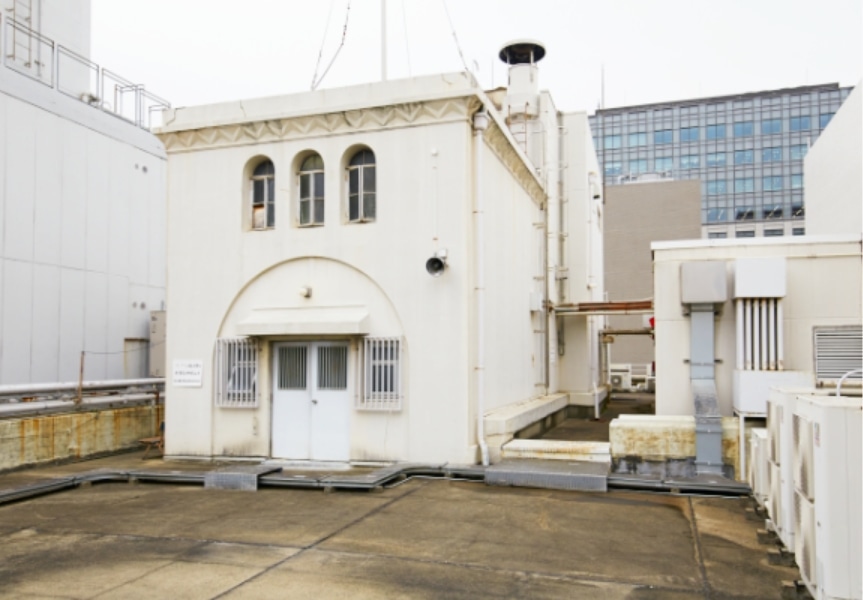
North side
Marble of the entrance on the 1st floor

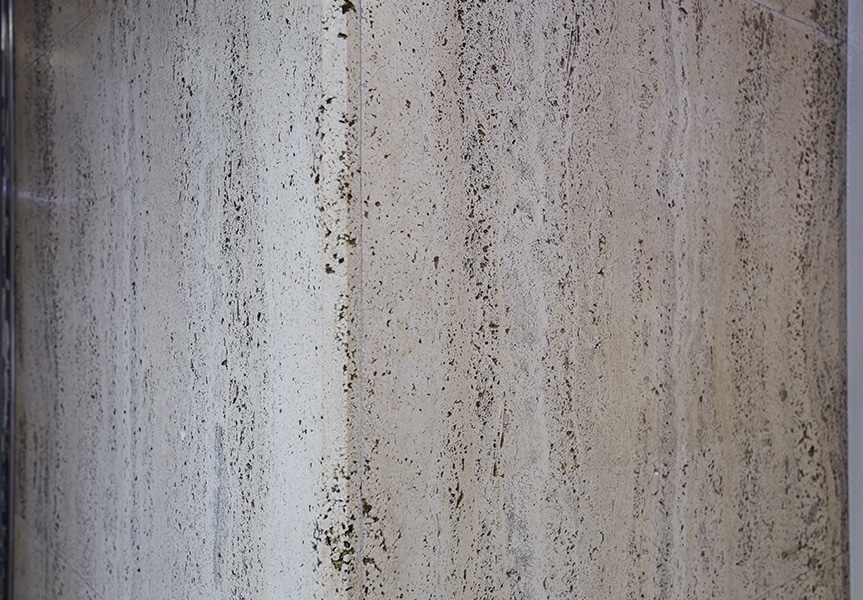
The marble with beautiful stripes and small holes scattered around is high-end building stone called ‘travertine‘, which is hardened coral.
The corners are round as they are chamfered to ensure safety. The fact of safety-consciousness and the use of high-end stone for the walls is proof that the 1st floor was designed as a shop space.
Decoration of the handrail for the stairs on the basement 1st floor
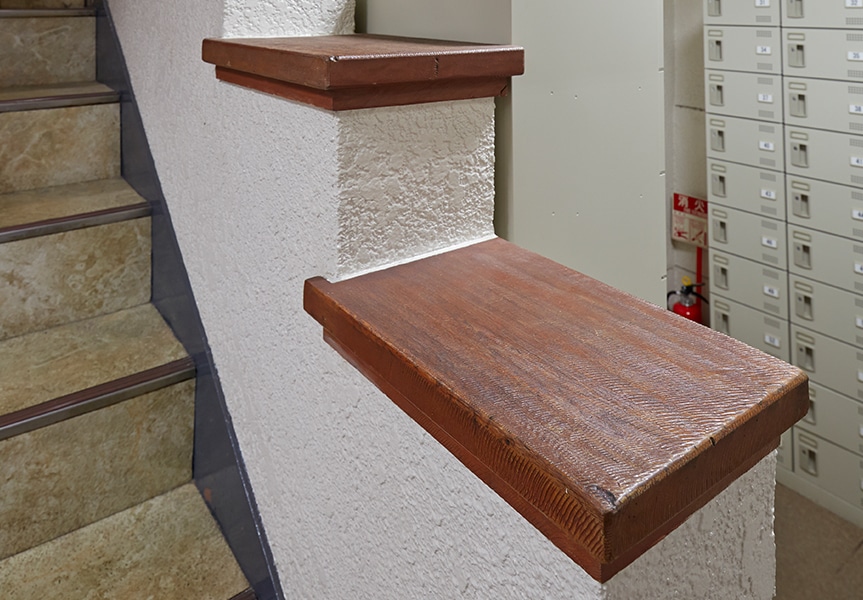
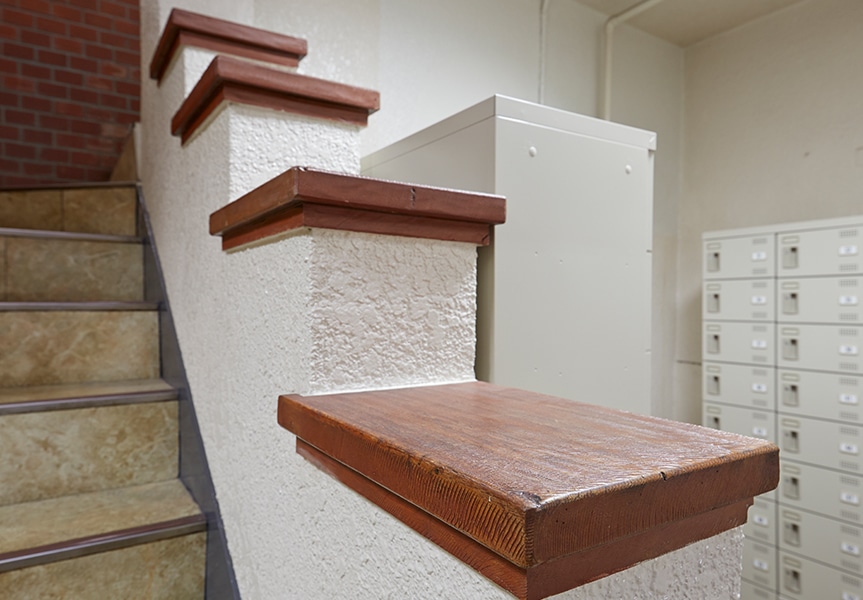
The stepwise handrail is a method used in buildings of German Expressionism, which leads to the design of Art Deco.
Many of the designs which were thought to be avant-garde back then are characterized by their attention to details as you can see in Constructivism, German Expressionism, Art Deco and De Stijl of the Netherlands. In Art Nouveau, which prevailed before them, decorations were more concrete such as flowers, but after German Expressionism appeared, simple concrete decorations were eliminated, and buildings were designed by changing their form abstractly.
This is a method commonly used in Cubist Architecture as well.
Something rarer than the stepwise handrail is the wooden plate installed on the upper part of the handrail, whose surface is finished with a detailed engraving called rusticity.
This is the type of decoration which can be often seen in buildings inspired by arts and crafts and flourished in England from 19th to 20th century. This movement appeared in connection with another one called the ‘Garden City Movement‘ and led to the Mingei (Japanese folk art) Movement in Japan.
In this area, you can feel the taste of the countryside which emphasizes handwork from the interior. Since ‘design to show’ like this is applied on the stairs leading to the basement, this was designed on the assumption that customers also would visit the basement floor.
Curve on the back of the stairs and the end step of the back of the stairs on the 8th floor
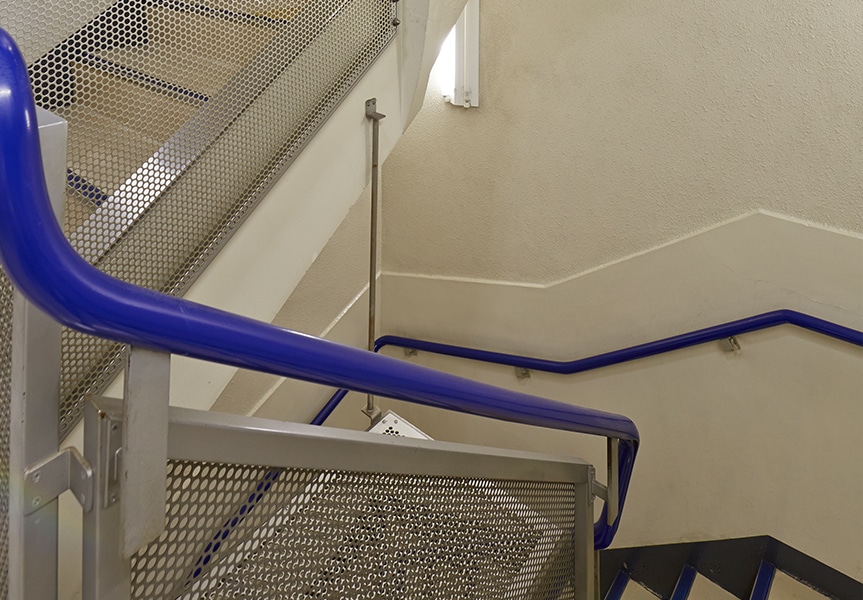

This is a shape produced as a result of careful plasterwork. The thorough plasterwork made the curve possible. As the number of plasterers is decreasing now, this type of detailed works are few, and people simply put plaster in a mold.
Crown molding is applied to the connecting structure of the ceiling and wall by handwork. Crowd molding is a decoration stretched around four corners to divide the ceiling from the wall.
These days, it is not rare to see a ready-made mold that is simply put on corners or nothing is done around that area. In this building, you can find many marks of handwork like this in various places.
View looking over from the roof and view looking up from the 2nd floor

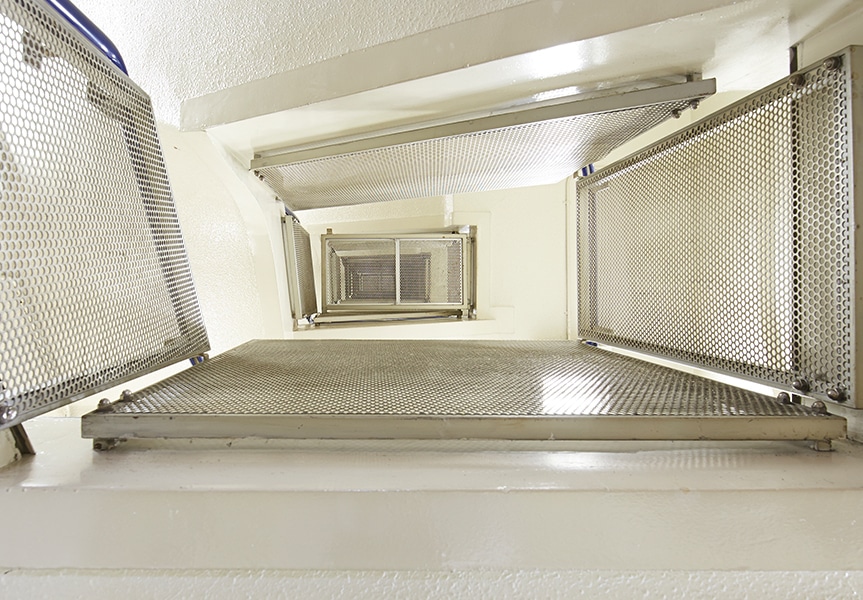
At the stairs on the north side, there is a stairwell which you may see in foreign movies, and the stairs are set to surround it. This is a style called a winder staircase, which is designed this way so that people who go up and down the stairs can enjoy the space.
Although there is no stairwell and just a winder staircase around an elevator on the south side, the same winder staircase style is installed on both the north and south side. Especially a winder staircase surrounding an elevator is something common to see.
Fan-shaped stairs on the 1st floor

The last 4 steps of the stairs leading to the 1st floor are arranged in a way that they look as if they are ripples spreading across the water.
The curvature of each nosing portion is the same, and it is a design which looks like a river is flowing out from an upstream to an estuary. As the curvature is the same, you can feel the beauty of the design, but this idea would not have been produced if space efficiency was prioritized.
You can also sense that they considered that this would make it easier for people coming from different directions such as the shop area on the 1st floor and the basement to go toward the next floor in the shortest distance.
Marble on the handrail for the stairs on the 2nd floor

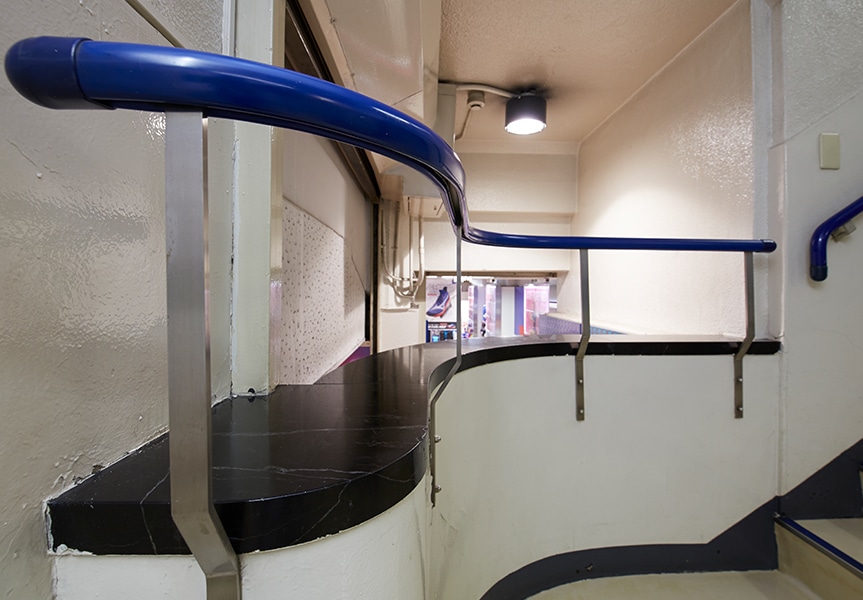
For commercial buildings, the 1st floor is the prime area where sales are highest. The mezzanine is located in a way that people can overlook that prime area.
When there is a stairwell in a building, people feel elation and spaciousness. They used this method of environmental psychology, and it is one of the space design methods applied in classical department stores.
The view from up here must have been popular since the building was finished, I assume.
What I would like you to pay attention to here is the black handrail on the mezzanine. This is actually black marble, which is used to provide a high-class feeling and is quite expensive. One of the reasons for the high price is that the pattern of the black marble used here is outstanding.
Regarding black marble, if it has a moderate number of white parts in it, it is supposed to be higher grade than if completely black. Such a white pattern is called ‘chintz pattern’, and it is said to be valuable not only in Japan but also in Italy, the kingdom of stone.
The black marble used here has an extremely gorgeous chintz pattern. Therefore, this has to come under the category of premium black marble.
End step of the back of the stairs on the 3rd and 4th floor
They are composed of curved surfaces so that people would not hit their head against the squared parts of the back of the stairs. First, they formed a straight shape with concrete and then made curved surfaces with plasterwork using lime sand plaster. They used it because mortar was costly at that time.


